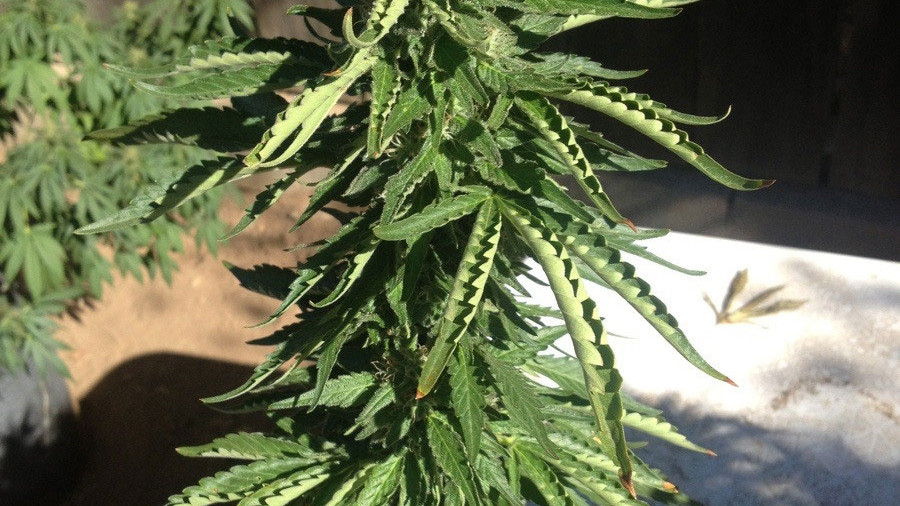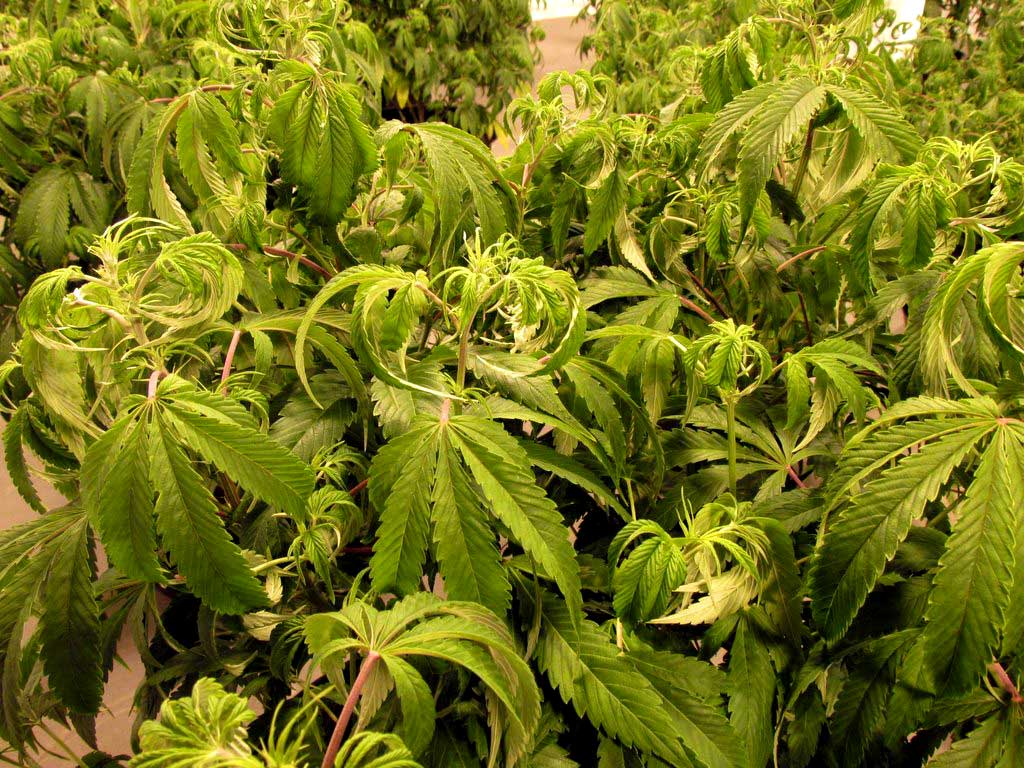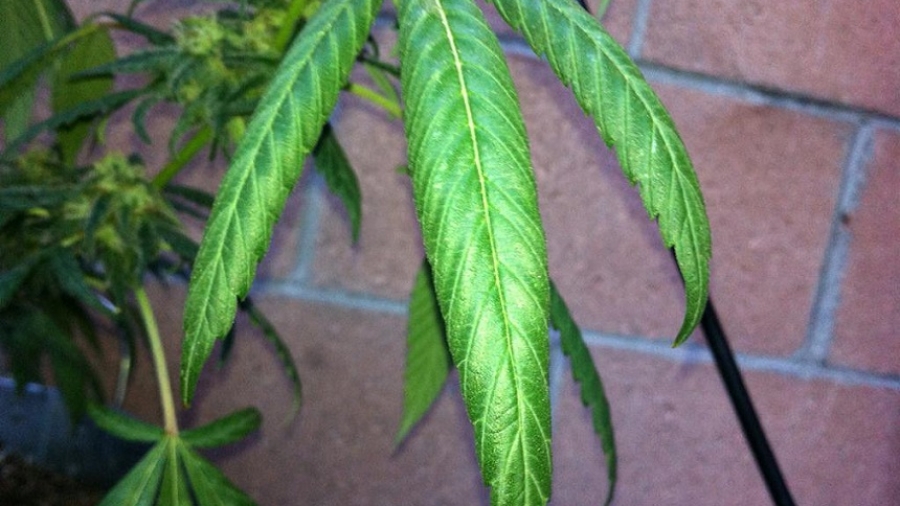There are numerous reasons why you might find curly cannabis leaves in your grow-op. This guide will explain why this phenomenon occurs, and what you can do to prevent it from ruining your final product.
Cannabis plants can’t vocalise a call for help—but they can send signals to tell you all is not well. If you see leaves either clawing or curling, there is trouble with the trees. Don’t ignore their pleas. This blog will help you identify the causes and cures for curly cannabis leaves.

CAUSE: OVERWATERING
Overwatering will literally drown your plant’s roots. Excess water will not only rinse most of the beneficial microbes from the medium, a sodden substrate can also become colonised by algae and nasty fungi. Persistent overwatering invariably invites the parasitic Pythium, better known as root rot. Cannabis plants with droopy, claw-like leaves could be trying to tell you they are waterlogged.
CURE
“Water mould” microorganisms are just like vampires; you have to invite them in before they can do any harm. Keep them out of the garden by making sure they are not welcome. Maintaining an effective wet-dry cycle is all it takes. If you can pick up your pots, do it. Then you can tell by their weight when it’s time to water.
If you can’t lift the containers, then consider a moisture meter and make sure to carefully monitor post-watering plant behaviour. Try reducing the volume of water. Alternatively, take longer intervals between waterings. Unfortunately, Pythium is virtually incurable and will turn your plant’s roots into brown sludge. If you see droopy, curly cannabis leaves, especially with young plants, look to the roots for answers.
CAUSE: OVERFERTILISATION
A heavy-handed approach to nutrients is ill-advised. Excessive doses of nitrogen-rich vegetative growth base nutes can cause clawing in leaves. Sometimes, they will even canoe. Similarly, overdoing it with the phosphorus and potassium during flowering will cause curly cannabis leaves and scorch the tips. Chlorosis is a common symptom in both cases.
CURE
Dial in feeding. Easier said than done right? Wrong! Almost every brand of well-known cannabis fertiliser offers a feeding chart free to download from their respective websites. Granted, not all cannabis varieties will respond in the same way to fertilisers.
It’s better to start low and go slow. You can incrementally increase doses without seeing leaves curling or clawing. But if you dive right in at maximum strength, you can expect plenty of curly cannabis leaves that will probably die and eventually drop-off.
It should go without saying, but we’ll say it again for good measure; make sure the nutrient solution is the right pH. That’s about 6.0pH for soil and a more precise 5.8pH for coco/hydroponics.
CAUSE: TEMPERATURES ARE TOO HOT
Heat stress can occur indoors or outdoors. If you see curling and nasty-looking brown fringing, your cannabis leaves are sending you a distress signal. Cannabis plants can photosynthesise efficiently at moderate temperatures up to 28°C. Anything above 30°C and your plants are in the danger zone. Combine this with low RH and you’ve got real problems. New leaves will grow gnarly and old leaves will curl yellow and maybe even burn to a rusty, brown crisp.
CURE
Indoor growers must constantly maintain the optimal environmental conditions. This starts with optimal light distance. The only way to keep the plant canopy in the sweet spot is to measure and adjust until mature plants peak in height during mid-late bloom, depending on the strain. Moreover, indoor growers can utilise air-con and fans to keep the grow-op cool.
Outdoor growers confronted with heat waves and drought conditions have less control than the indoor grower. Constructing a simple screen shade will keep plants slightly cooler and may prevent leaves from fraying and curling further. You can’t really revive scorched leaves and will have to remove older foliage beyond saving. Also, planting in white pots instead of black pots will keep the root zone cooler.
CAUSE: TEMPERATURES ARE TOO COLD
Cold temperatures can cause curly cannabis leaves too. Eventually, all kinds of leaf discolouration will develop. Sure, cooler nighttime temps late in bloom can add a dash of purple charm to buds, but prolonged exposure to temperatures below 10°C will kill your plants. Flowers will be loose and leafy if plants even make it to harvest. Coupled with high RH, buds will be moist and become vulnerable to Botrytis, AKA bud rot.
CURE
Indoors, if temps are too low, you can always add more grow lights and turn a negative into a positive. Outdoor growers might consider an early harvest, or if possible, moving plants indoors at night. Cannabis is a hardy plant species, but outside of the optimal 20–28°C temperature range, leaves will curl or claw.

A FINAL WORD ON CURLY CANNABIS LEAVES: GENETICS
Genetics are the cause of all kinds of cannabis leaf deformities and mutations. Some strains occasionally have a tendency towards curly leaves or other odd traits. Most growers will thin out these plants. All the shrewd cultivator can do is write it off as bad luck.
Sativa strains and many autoflowering varieties are sensitive to high doses of fertilisers. This is a trait that can cause problems for beginner growers. The solution is to research your reefer. Always find out as much as you can about the genetics of a strain before you decide to grow it. Curly cannabis leaves can be completely avoided if you know how to keep your plants healthy.

All of my leaves are curling inward to itself and clawing downward. Will they do that if underwater? I don’t feel that I’m over watering.